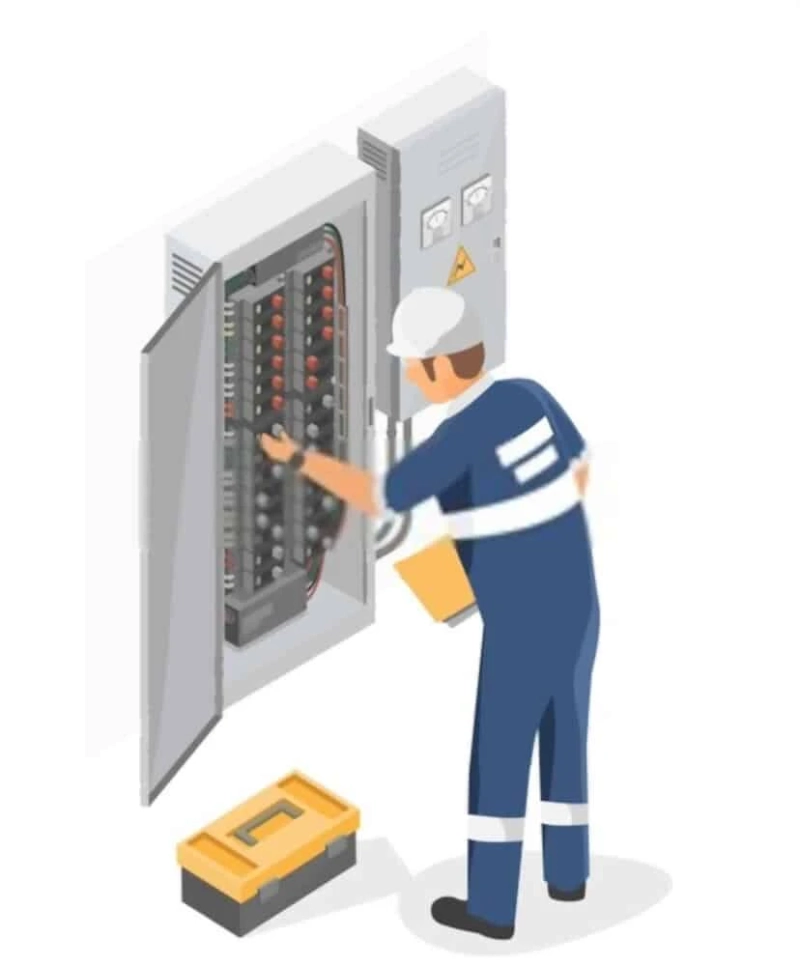.Working with electricity isn’t typically a do-it-yourself kind of job. Unless you’re an experienced Eureka electrician, major electrical repairs and installation are better left to the professionals.
Circuit breakers have heavy, moving contact assemblies and powerful springs that could maim you if your hand happened to get in the way of either one at the wrong time. This is why voltage and current diagnostic testing and maintenance is necessary to keep your facility safe.
Inspecting the Breaker
Electrical circuit breakers are essential to keep power transmission networks functioning safely and efficiently. They protect installations against phase-to-earth and phase-to-ground short circuits, preventing equipment destruction and optimizing energy efficiency.
Unfortunately, these critical safety devices are often overlooked in Voltage Circuits Maintenance. In fact, a recent study found that 53% of low and medium voltage breakers were mechanically unsatisfactory.
Using a circuit breaker maintenance kit, you can perform a range of inspections to identify mechanical issues before they cause serious problems. These tests include thermal analysis to check the breaker’s ability to handle its rated current, dielectric test to assess its insulating properties, and a visual inspection to look for cracks in cases and operating handles.
These test results give you a clear picture of how your breaker is performing and what its condition is like. With these data points, you can target the corrective actions that are needed to improve breaker performance and prevent expensive downtime.
Testing the Breaker
The power circuit breaker is equipment intended to switch on and off electric currents in power transmission networks for regular operations. But if it fails to operate properly, it can cause power outages and destroy equipment. This can be avoided with proper maintenance techniques.
Before doing any testing, you should turn off and unplug any appliances connected to the breaker you want to test. Next, you should put on a pair of rubber-soled shoes and safety gloves to protect yourself from any arcs that may occur during testing. Once you are ready to begin, open the electrical panel box and remove the metal frame around the breaker.
Perform the operations tests recommended by the breaker manufacturer. This includes instantaneous primary injection tests to confirm the breaker\'s ability to perform at its maximum rated current, and overcurrent analysis that ensures the breaker has accurate time delay and trip protection settings. You should also conduct insulation megger tests to verify the integrity of the molded case breaker\'s insulating material.
Restoring the Breaker
A circuit breaker is a safety device that prevents electrical surges and fires by cutting off power to the outlets when levels get too high. It does this via a system of switches, some of which are located in a grey metal service panel within your home.
Working around the electrical panel can be hazardous if you don’t know what you’re doing. Unscrewing and removing the inner dead-front cover exposes highly powered lugs, so it’s important to follow proper procedures to avoid injury.
First, locate the breaker switch that has tripped and push it all the way to the “off” position. Then, flip it back to the “on” position to restore electricity to that outlet. Before you do this, make sure that all lights and electric devices are turned off or unplugged from the breaker. This will prevent them from getting damaged by the sudden current of restored power. Next, a technician should inspect and clean the primary and auxiliary connections and operating mechanisms of the circuit breaker.
Repairing the Breaker
The breaker is what cuts off the flow of electricity when the circuit is carrying too much current. It is a vital part of an electrical system and can prevent fires or other damage by simply stopping power from getting to the devices on the line with the help of Electrical Contractors.
Breakers come in varying sizes, from small devices that protect individual appliances to large switchgear that can protect high-voltage circuits that feed entire cities. Despite this, they all work in similar ways and have many of the same basic functions.
Like any machine, a breaker should be cleaned and maintained on a regular basis. This includes a visual inspection and a cleaning of the components inside the breaker. It is also important to check the breaker for proper lubrication. If the primary and auxiliary connections, pivot points, and operating mechanisms are not properly lubricated, they could cause issues that lead to a breaker failure or arc flash.



